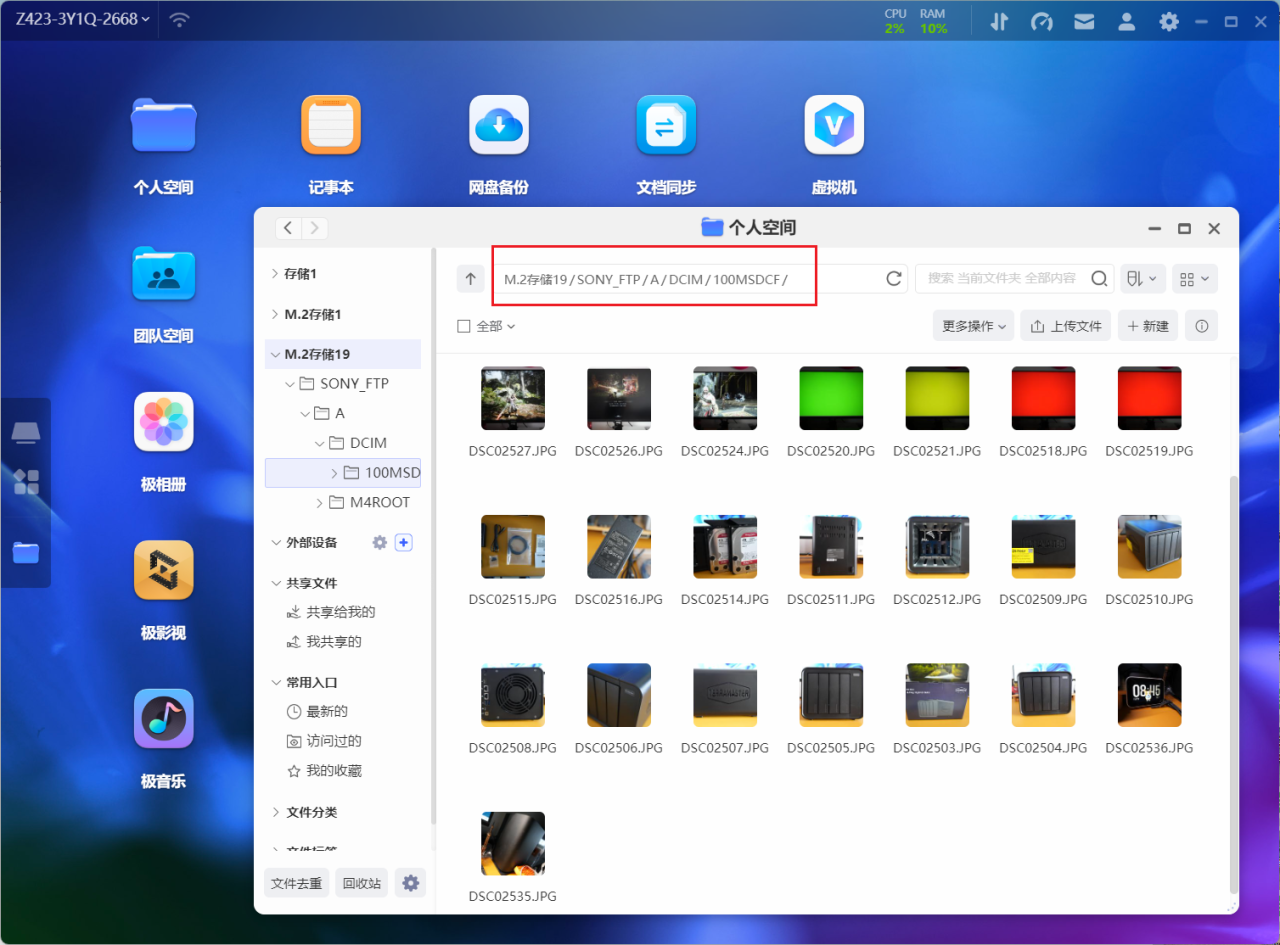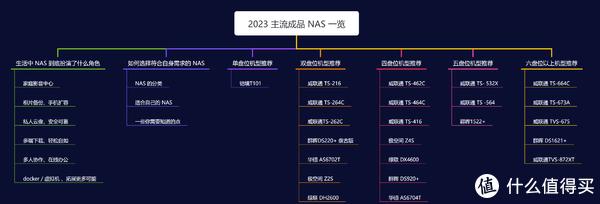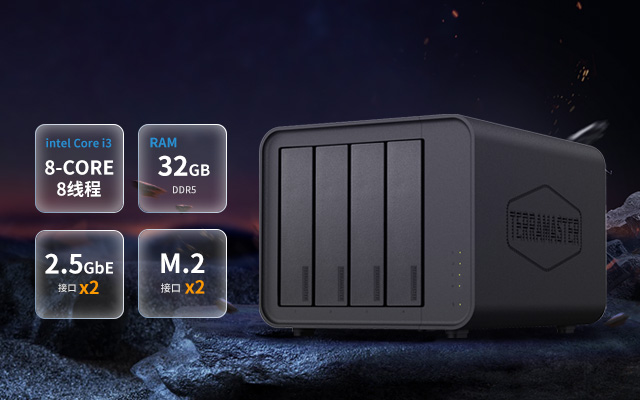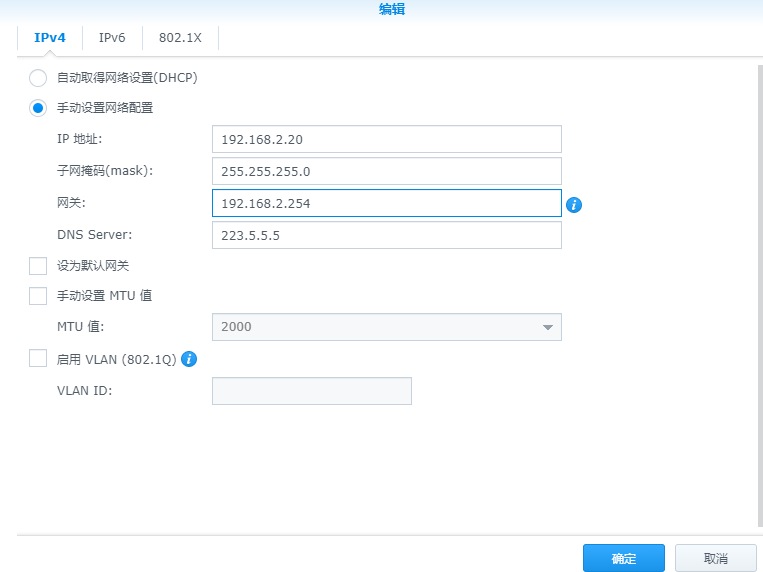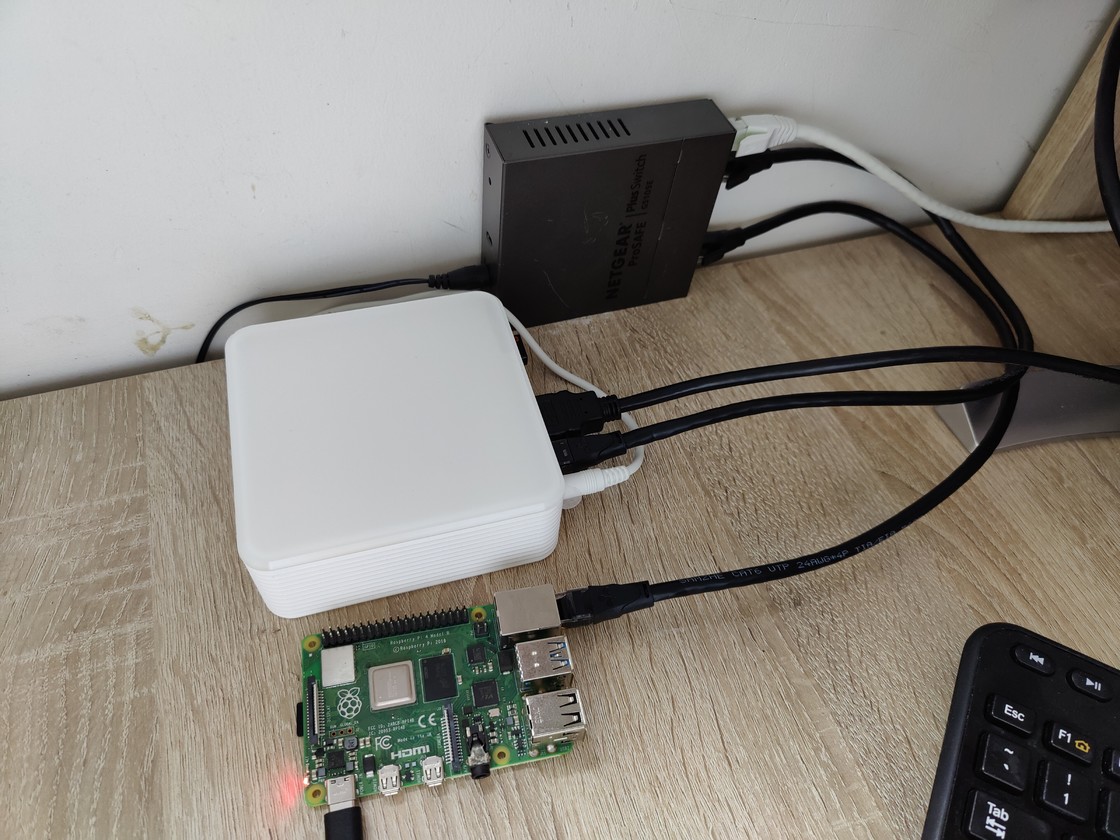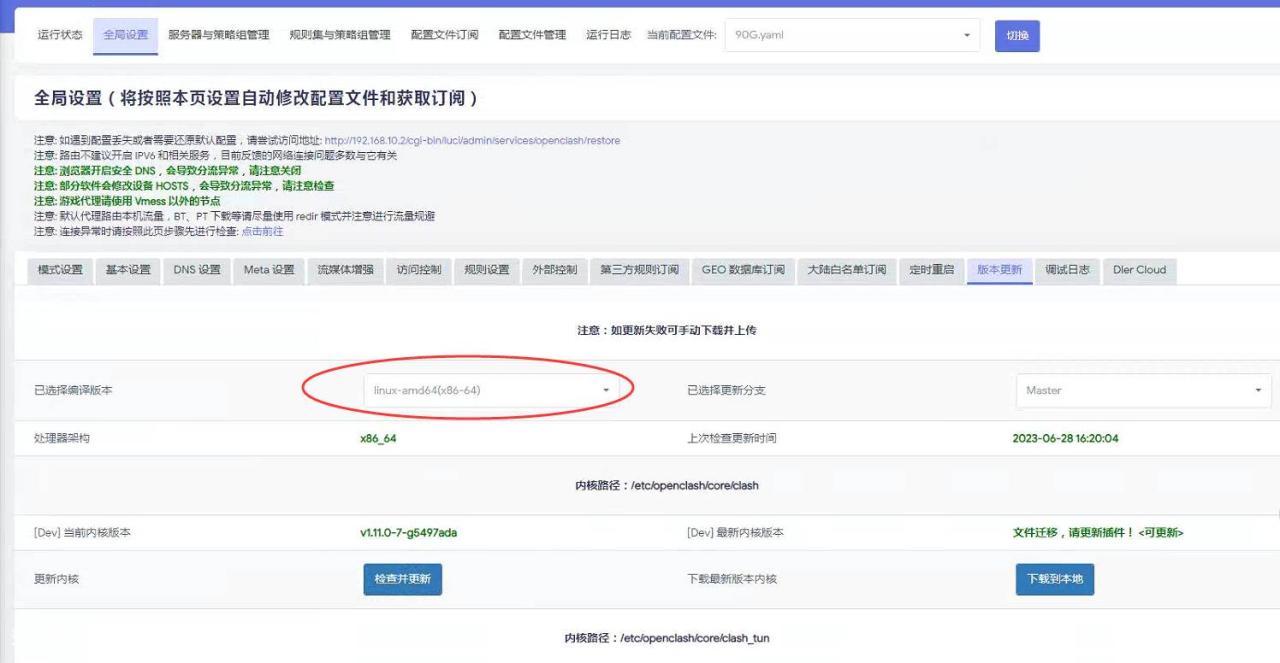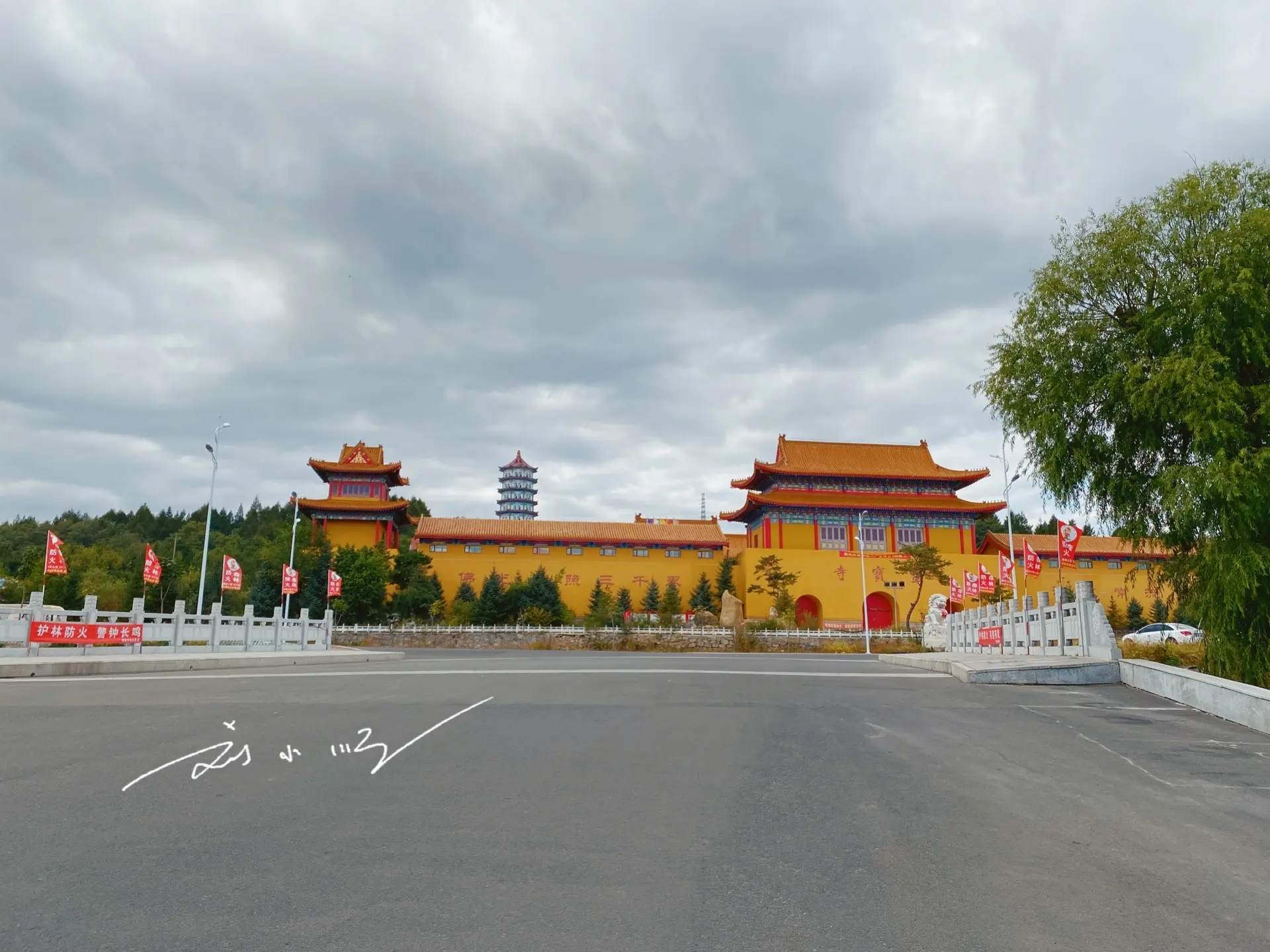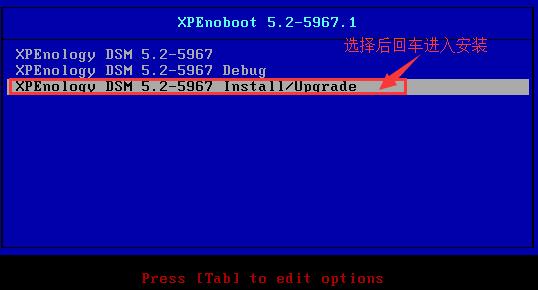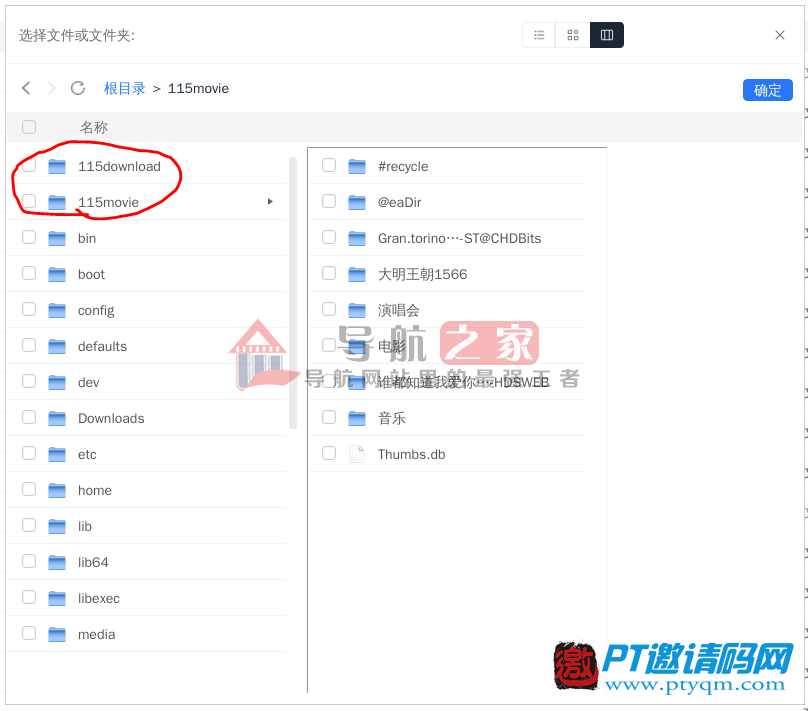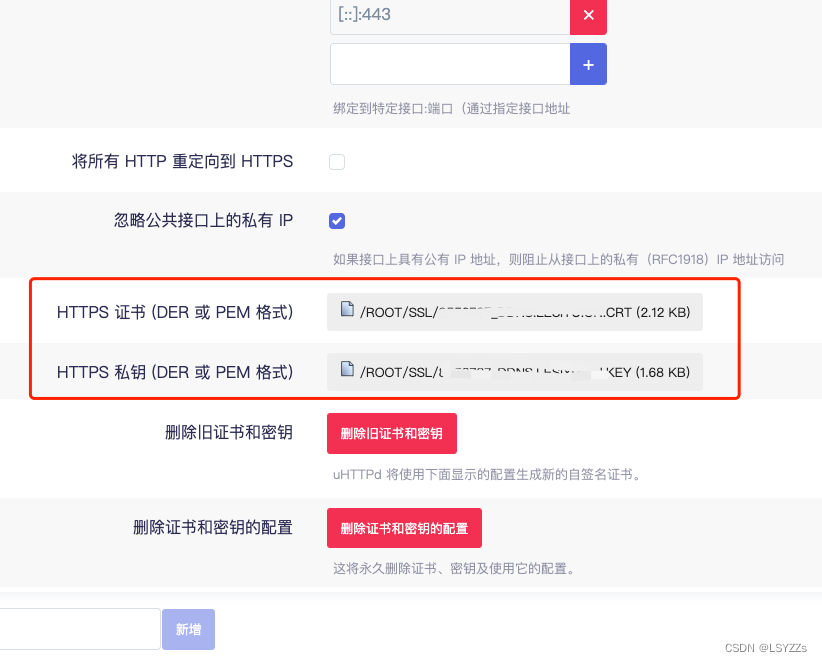网络时代我们经常需要远程互访问管理家庭或公司里的电脑,NAS,连网设备,随着宽带的提速网络的普及,未来这个需求只会更加的多。虽然现在都有IPV6可以直连了,但有些设备或网络还不支持或没开启,IPV6毕竟是暴露在公网的始终没那么安全,总之多个方案多个选择是最好的,所以折腾搭建了异地组网网络,也叫虚拟局域网,号称搭建后能自动P2P组网直连即不需要走公网服务器的流量,自用的话用组网的方式比内网穿透NPS,FRP和IPV6要安全可靠快速。
要搭建一套远程组网网络必须有一台公网VPS的linux服务器支持docker运行,推荐使用腾讯的现在活动很便宜几十块就一年,还能同价续费一年等于白撸二年,购买连接:精选特惠 上云无忧_腾讯云优惠活动,往下拉就能看到轻量的服务器购买,作者使用的就是腾讯的轻量海外服务器199/年,买海外服务器的懂得都懂了,可以挂很多服务,作者的网站88531,这里不方便多说了,至于服务器安装网上有很多教程这里就不说了,下面就只讲解这个组网Headscale部署过程,推荐使用宝塔部署方便管理。

1、新建挂载目录和创建数据库文件
mkdir -p /docker/headscale/config touch /docker/headscale/config/db.sqlitemkdir -p /docker/headscale/config touch /docker/headscale/config/db.sqlitemkdir -p /docker/headscale/config touch /docker/headscale/config/db.sqliteCopy
2、两个文件配置文件 (注意存放的路径)
可以根据自己需求修改,注意端口不能和你已有的应用有冲突
/docker/headscale/config/config.yaml 主要配置组网的相关信息
<public_ip>需要修改为你服务器的实际IP
--- # headscale will look for a configuration file named `config.yaml` (or `config.json`) in the following order: # # - `/etc/headscale` # - `~/.headscale` # - current working directory # The url clients will connect to. # Typically this will be a domain like: # # https://myheadscale.example.com:443 # server_url: http://<public_ip>:8081 # Address to listen to / bind to on the server # # For production: # listen_addr: 0.0.0.0:8080 listen_addr: 0.0.0.0:8081 # Address to listen to /metrics, you may want # to keep this endpoint private to your internal # network # metrics_listen_addr: 0.0.0.0:6030 # Address to listen for gRPC. # gRPC is used for controlling a headscale server # remotely with the CLI # Note: Remote access _only_ works if you have # valid certificates. # # For production: # grpc_listen_addr: 0.0.0.0:50443 grpc_listen_addr: 127.0.0.1:50443 # Allow the gRPC admin interface to run in INSECURE # mode. This is not recommended as the traffic will # be unencrypted. Only enable if you know what you # are doing. grpc_allow_insecure: false # Private key used to encrypt the traffic between headscale # and Tailscale clients. # The private key file will be autogenerated if it's missing. # private_key_path: /etc/headscale/private.key # The Noise section includes specific configuration for the # TS2021 Noise protocol noise: # The Noise private key is used to encrypt the # traffic between headscale and Tailscale clients when # using the new Noise-based protocol. It must be different # from the legacy private key. private_key_path: /etc/headscale/noise_private.key # List of IP prefixes to allocate tailaddresses from. # Each prefix consists of either an IPv4 or IPv6 address, # and the associated prefix length, delimited by a slash. # While this looks like it can take arbitrary values, it # needs to be within IP ranges supported by the Tailscale # client. # IPv6: https://github.com/tailscale/tailscale/blob/22ebb25e833264f58d7c3f534a8b166894a89536/net/tsaddr/tsaddr.go#LL81C52-L81C71 # IPv4: https://github.com/tailscale/tailscale/blob/22ebb25e833264f58d7c3f534a8b166894a89536/net/tsaddr/tsaddr.go#L33 ip_prefixes: - fd7a:115c:a1e0::/48 - 100.64.0.0/10 # DERP is a relay system that Tailscale uses when a direct # connection cannot be established. # https://tailscale.com/blog/how-tailscale-works/#encrypted-tcp-relays-derp # # headscale needs a list of DERP servers that can be presented # to the clients. derp: server: # If enabled, runs the embedded DERP server and merges it into the rest of the DERP config # The Headscale server_url defined above MUST be using https, DERP requires TLS to be in place enabled: false # Region ID to use for the embedded DERP server. # The local DERP prevails if the region ID collides with other region ID coming from # the regular DERP config. region_id: 999 # Region code and name are displayed in the Tailscale UI to identify a DERP region region_code: "headscale" region_name: "Headscale Embedded DERP" # Listens over UDP at the configured address for STUN connections - to help with NAT traversal. # When the embedded DERP server is enabled stun_listen_addr MUST be defined. # # For more details on how this works, check this great article: https://tailscale.com/blog/how-tailscale-works/ stun_listen_addr: "0.0.0.0:3478" # List of externally available DERP maps encoded in JSON urls: - https://controlplane.tailscale.com/derpmap/default # Locally available DERP map files encoded in YAML # # This option is mostly interesting for people hosting # their own DERP servers: # https://tailscale.com/kb/1118/custom-derp-servers/ # # paths: # - /etc/headscale/derp-example.yaml paths: [] # If enabled, a worker will be set up to periodically # refresh the given sources and update the derpmap # will be set up. auto_update_enabled: true # How often should we check for DERP updates? update_frequency: 24h # Disables the automatic check for headscale updates on startup disable_check_updates: true # Time before an inactive ephemeral node is deleted? ephemeral_node_inactivity_timeout: 30m # Period to check for node updates within the tailnet. A value too low will severely affect # CPU consumption of Headscale. A value too high (over 60s) will cause problems # for the nodes, as they won't get updates or keep alive messages frequently enough. # In case of doubts, do not touch the default 10s. node_update_check_interval: 10s # SQLite config db_type: sqlite3 # For production: db_path: /etc/headscale/db.sqlite # # Postgres config # If using a Unix socket to connect to Postgres, set the socket path in the 'host' field and leave 'port' blank. # db_type: postgres # db_host: localhost # db_port: 5432 # db_name: headscale # db_user: foo # db_pass: bar # If other 'sslmode' is required instead of 'require(true)' and 'disabled(false)', set the 'sslmode' you need # in the 'db_ssl' field. Refers to https://www.postgresql.org/docs/current/libpq-ssl.html Table 34.1. # db_ssl: false ### TLS configuration # ## Let's encrypt / ACME # # headscale supports automatically requesting and setting up # TLS for a domain with Let's Encrypt. # # URL to ACME directory acme_url: https://acme-v02.api.letsencrypt.org/directory # Email to register with ACME provider acme_email: "" # Domain name to request a TLS certificate for: tls_letsencrypt_hostname: "" # Path to store certificates and metadata needed by # letsencrypt # For production: tls_letsencrypt_cache_dir: /var/lib/headscale/cache # Type of ACME challenge to use, currently supported types: # HTTP-01 or TLS-ALPN-01 # See [docs/tls.md](docs/tls.md) for more information tls_letsencrypt_challenge_type: HTTP-01 # When HTTP-01 challenge is chosen, letsencrypt must set up a # verification endpoint, and it will be listening on: # :http = port 80 tls_letsencrypt_listen: ":http" ## Use already defined certificates: tls_cert_path: "" tls_key_path: "" log: # Output formatting for logs: text or json format: text level: info # Path to a file containg ACL policies. # ACLs can be defined as YAML or HUJSON. # https://tailscale.com/kb/1018/acls/ acl_policy_path: "" ## DNS # # headscale supports Tailscale's DNS configuration and MagicDNS. # Please have a look to their KB to better understand the concepts: # # - https://tailscale.com/kb/1054/dns/ # - https://tailscale.com/kb/1081/magicdns/ # - https://tailscale.com/blog/2021-09-private-dns-with-magicdns/ # dns_config: # Whether to prefer using Headscale provided DNS or use local. override_local_dns: false # List of DNS servers to expose to clients. nameservers: - 114.114.114.114 # NextDNS (see https://tailscale.com/kb/1218/nextdns/). # "abc123" is example NextDNS ID, replace with yours. # # With metadata sharing: # nameservers: # - https://dns.nextdns.io/abc123 # # Without metadata sharing: # nameservers: # - 2a07:a8c0::ab:c123 # - 2a07:a8c1::ab:c123 # Split DNS (see https://tailscale.com/kb/1054/dns/), # list of search domains and the DNS to query for each one. # # restricted_nameservers: # foo.bar.com: # - 1.1.1.1 # darp.headscale.net: # - 1.1.1.1 # - 8.8.8.8 # Search domains to inject. domains: [] # Extra DNS records # so far only A-records are supported (on the tailscale side) # See https://github.com/juanfont/headscale/blob/main/docs/dns-records.md#Limitations # extra_records: # - name: "grafana.myvpn.example.com" # type: "A" # value: "100.64.0.3" # # # you can also put it in one line # - { name: "prometheus.myvpn.example.com", type: "A", value: "100.64.0.3" } # Whether to use [MagicDNS](https://tailscale.com/kb/1081/magicdns/). # Only works if there is at least a nameserver defined. magic_dns: true # Defines the base domain to create the hostnames for MagicDNS. # `base_domain` must be a FQDNs, without the trailing dot. # The FQDN of the hosts will be # `hostname.user.base_domain` (e.g., _myhost.myuser.example.com_). base_domain: example.com # Unix socket used for the CLI to connect without authentication # Note: for production you will want to set this to something like: unix_socket: /etc/headscale/headscale.sock unix_socket_permission: "0770" # # headscale supports experimental OpenID connect support, # it is still being tested and might have some bugs, please # help us test it. # OpenID Connect # oidc: # only_start_if_oidc_is_available: true # issuer: "https://your-oidc.issuer.com/path" # client_id: "your-oidc-client-id" # client_secret: "your-oidc-client-secret" # # Alternatively, set `client_secret_path` to read the secret from the file. # # It resolves environment variables, making integration to systemd's # # `LoadCredential` straightforward: # client_secret_path: "${CREDENTIALS_DIRECTORY}/oidc_client_secret" # # client_secret and client_secret_path are mutually exclusive. # # # The amount of time from a node is authenticated with OpenID until it # # expires and needs to reauthenticate. # # Setting the value to "0" will mean no expiry. # expiry: 180d # # # Use the expiry from the token received from OpenID when the user logged # # in, this will typically lead to frequent need to reauthenticate and should # # only been enabled if you know what you are doing. # # Note: enabling this will cause `oidc.expiry` to be ignored. # use_expiry_from_token: false # # # Customize the scopes used in the OIDC flow, defaults to "openid", "profile" and "email" and add custom query # # parameters to the Authorize Endpoint request. Scopes default to "openid", "profile" and "email". # # scope: ["openid", "profile", "email", "custom"] # extra_params: # domain_hint: example.com # # # List allowed principal domains and/or users. If an authenticated user's domain is not in this list, the # # authentication request will be rejected. # # allowed_domains: # - example.com # # Note: Groups from keycloak have a leading '/' # allowed_groups: # - /headscale # allowed_users: # - alice@example.com # # # If `strip_email_domain` is set to `true`, the domain part of the username email address will be removed. # # This will transform `first-name.last-name@example.com` to the user `first-name.last-name` # # If `strip_email_domain` is set to `false` the domain part will NOT be removed resulting to the following # user: `first-name.last-name.example.com` # # strip_email_domain: true # Logtail configuration # Logtail is Tailscales logging and auditing infrastructure, it allows the control panel # to instruct tailscale nodes to log their activity to a remote server. logtail: # Enable logtail for this headscales clients. # As there is currently no support for overriding the log server in headscale, this is # disabled by default. Enabling this will make your clients send logs to Tailscale Inc. enabled: false # Enabling this option makes devices prefer a random port for WireGuard traffic over the # default static port 41641. This option is intended as a workaround for some buggy # firewall devices. See https://tailscale.com/kb/1181/firewalls/ for more information. randomize_client_port: true--- # headscale will look for a configuration file named `config.yaml` (or `config.json`) in the following order: # # - `/etc/headscale` # - `~/.headscale` # - current working directory # The url clients will connect to. # Typically this will be a domain like: # # https://myheadscale.example.com:443 # server_url: http://<public_ip>:8081 # Address to listen to / bind to on the server # # For production: # listen_addr: 0.0.0.0:8080 listen_addr: 0.0.0.0:8081 # Address to listen to /metrics, you may want # to keep this endpoint private to your internal # network # metrics_listen_addr: 0.0.0.0:6030 # Address to listen for gRPC. # gRPC is used for controlling a headscale server # remotely with the CLI # Note: Remote access _only_ works if you have # valid certificates. # # For production: # grpc_listen_addr: 0.0.0.0:50443 grpc_listen_addr: 127.0.0.1:50443 # Allow the gRPC admin interface to run in INSECURE # mode. This is not recommended as the traffic will # be unencrypted. Only enable if you know what you # are doing. grpc_allow_insecure: false # Private key used to encrypt the traffic between headscale # and Tailscale clients. # The private key file will be autogenerated if it's missing. # private_key_path: /etc/headscale/private.key # The Noise section includes specific configuration for the # TS2021 Noise protocol noise: # The Noise private key is used to encrypt the # traffic between headscale and Tailscale clients when # using the new Noise-based protocol. It must be different # from the legacy private key. private_key_path: /etc/headscale/noise_private.key # List of IP prefixes to allocate tailaddresses from. # Each prefix consists of either an IPv4 or IPv6 address, # and the associated prefix length, delimited by a slash. # While this looks like it can take arbitrary values, it # needs to be within IP ranges supported by the Tailscale # client. # IPv6: https://github.com/tailscale/tailscale/blob/22ebb25e833264f58d7c3f534a8b166894a89536/net/tsaddr/tsaddr.go#LL81C52-L81C71 # IPv4: https://github.com/tailscale/tailscale/blob/22ebb25e833264f58d7c3f534a8b166894a89536/net/tsaddr/tsaddr.go#L33 ip_prefixes: - fd7a:115c:a1e0::/48 - 100.64.0.0/10 # DERP is a relay system that Tailscale uses when a direct # connection cannot be established. # https://tailscale.com/blog/how-tailscale-works/#encrypted-tcp-relays-derp # # headscale needs a list of DERP servers that can be presented # to the clients. derp: server: # If enabled, runs the embedded DERP server and merges it into the rest of the DERP config # The Headscale server_url defined above MUST be using https, DERP requires TLS to be in place enabled: false # Region ID to use for the embedded DERP server. # The local DERP prevails if the region ID collides with other region ID coming from # the regular DERP config. region_id: 999 # Region code and name are displayed in the Tailscale UI to identify a DERP region region_code: "headscale" region_name: "Headscale Embedded DERP" # Listens over UDP at the configured address for STUN connections - to help with NAT traversal. # When the embedded DERP server is enabled stun_listen_addr MUST be defined. # # For more details on how this works, check this great article: https://tailscale.com/blog/how-tailscale-works/ stun_listen_addr: "0.0.0.0:3478" # List of externally available DERP maps encoded in JSON urls: - https://controlplane.tailscale.com/derpmap/default # Locally available DERP map files encoded in YAML # # This option is mostly interesting for people hosting # their own DERP servers: # https://tailscale.com/kb/1118/custom-derp-servers/ # # paths: # - /etc/headscale/derp-example.yaml paths: [] # If enabled, a worker will be set up to periodically # refresh the given sources and update the derpmap # will be set up. auto_update_enabled: true # How often should we check for DERP updates? update_frequency: 24h # Disables the automatic check for headscale updates on startup disable_check_updates: true # Time before an inactive ephemeral node is deleted? ephemeral_node_inactivity_timeout: 30m # Period to check for node updates within the tailnet. A value too low will severely affect # CPU consumption of Headscale. A value too high (over 60s) will cause problems # for the nodes, as they won't get updates or keep alive messages frequently enough. # In case of doubts, do not touch the default 10s. node_update_check_interval: 10s # SQLite config db_type: sqlite3 # For production: db_path: /etc/headscale/db.sqlite # # Postgres config # If using a Unix socket to connect to Postgres, set the socket path in the 'host' field and leave 'port' blank. # db_type: postgres # db_host: localhost # db_port: 5432 # db_name: headscale # db_user: foo # db_pass: bar # If other 'sslmode' is required instead of 'require(true)' and 'disabled(false)', set the 'sslmode' you need # in the 'db_ssl' field. Refers to https://www.postgresql.org/docs/current/libpq-ssl.html Table 34.1. # db_ssl: false ### TLS configuration # ## Let's encrypt / ACME # # headscale supports automatically requesting and setting up # TLS for a domain with Let's Encrypt. # # URL to ACME directory acme_url: https://acme-v02.api.letsencrypt.org/directory # Email to register with ACME provider acme_email: "" # Domain name to request a TLS certificate for: tls_letsencrypt_hostname: "" # Path to store certificates and metadata needed by # letsencrypt # For production: tls_letsencrypt_cache_dir: /var/lib/headscale/cache # Type of ACME challenge to use, currently supported types: # HTTP-01 or TLS-ALPN-01 # See [docs/tls.md](docs/tls.md) for more information tls_letsencrypt_challenge_type: HTTP-01 # When HTTP-01 challenge is chosen, letsencrypt must set up a # verification endpoint, and it will be listening on: # :http = port 80 tls_letsencrypt_listen: ":http" ## Use already defined certificates: tls_cert_path: "" tls_key_path: "" log: # Output formatting for logs: text or json format: text level: info # Path to a file containg ACL policies. # ACLs can be defined as YAML or HUJSON. # https://tailscale.com/kb/1018/acls/ acl_policy_path: "" ## DNS # # headscale supports Tailscale's DNS configuration and MagicDNS. # Please have a look to their KB to better understand the concepts: # # - https://tailscale.com/kb/1054/dns/ # - https://tailscale.com/kb/1081/magicdns/ # - https://tailscale.com/blog/2021-09-private-dns-with-magicdns/ # dns_config: # Whether to prefer using Headscale provided DNS or use local. override_local_dns: false # List of DNS servers to expose to clients. nameservers: - 114.114.114.114 # NextDNS (see https://tailscale.com/kb/1218/nextdns/). # "abc123" is example NextDNS ID, replace with yours. # # With metadata sharing: # nameservers: # - https://dns.nextdns.io/abc123 # # Without metadata sharing: # nameservers: # - 2a07:a8c0::ab:c123 # - 2a07:a8c1::ab:c123 # Split DNS (see https://tailscale.com/kb/1054/dns/), # list of search domains and the DNS to query for each one. # # restricted_nameservers: # foo.bar.com: # - 1.1.1.1 # darp.headscale.net: # - 1.1.1.1 # - 8.8.8.8 # Search domains to inject. domains: [] # Extra DNS records # so far only A-records are supported (on the tailscale side) # See https://github.com/juanfont/headscale/blob/main/docs/dns-records.md#Limitations # extra_records: # - name: "grafana.myvpn.example.com" # type: "A" # value: "100.64.0.3" # # # you can also put it in one line # - { name: "prometheus.myvpn.example.com", type: "A", value: "100.64.0.3" } # Whether to use [MagicDNS](https://tailscale.com/kb/1081/magicdns/). # Only works if there is at least a nameserver defined. magic_dns: true # Defines the base domain to create the hostnames for MagicDNS. # `base_domain` must be a FQDNs, without the trailing dot. # The FQDN of the hosts will be # `hostname.user.base_domain` (e.g., _myhost.myuser.example.com_). base_domain: example.com # Unix socket used for the CLI to connect without authentication # Note: for production you will want to set this to something like: unix_socket: /etc/headscale/headscale.sock unix_socket_permission: "0770" # # headscale supports experimental OpenID connect support, # it is still being tested and might have some bugs, please # help us test it. # OpenID Connect # oidc: # only_start_if_oidc_is_available: true # issuer: "https://your-oidc.issuer.com/path" # client_id: "your-oidc-client-id" # client_secret: "your-oidc-client-secret" # # Alternatively, set `client_secret_path` to read the secret from the file. # # It resolves environment variables, making integration to systemd's # # `LoadCredential` straightforward: # client_secret_path: "${CREDENTIALS_DIRECTORY}/oidc_client_secret" # # client_secret and client_secret_path are mutually exclusive. # # # The amount of time from a node is authenticated with OpenID until it # # expires and needs to reauthenticate. # # Setting the value to "0" will mean no expiry. # expiry: 180d # # # Use the expiry from the token received from OpenID when the user logged # # in, this will typically lead to frequent need to reauthenticate and should # # only been enabled if you know what you are doing. # # Note: enabling this will cause `oidc.expiry` to be ignored. # use_expiry_from_token: false # # # Customize the scopes used in the OIDC flow, defaults to "openid", "profile" and "email" and add custom query # # parameters to the Authorize Endpoint request. Scopes default to "openid", "profile" and "email". # # scope: ["openid", "profile", "email", "custom"] # extra_params: # domain_hint: example.com # # # List allowed principal domains and/or users. If an authenticated user's domain is not in this list, the # # authentication request will be rejected. # # allowed_domains: # - example.com # # Note: Groups from keycloak have a leading '/' # allowed_groups: # - /headscale # allowed_users: # - alice@example.com # # # If `strip_email_domain` is set to `true`, the domain part of the username email address will be removed. # # This will transform `first-name.last-name@example.com` to the user `first-name.last-name` # # If `strip_email_domain` is set to `false` the domain part will NOT be removed resulting to the following # user: `first-name.last-name.example.com` # # strip_email_domain: true # Logtail configuration # Logtail is Tailscales logging and auditing infrastructure, it allows the control panel # to instruct tailscale nodes to log their activity to a remote server. logtail: # Enable logtail for this headscales clients. # As there is currently no support for overriding the log server in headscale, this is # disabled by default. Enabling this will make your clients send logs to Tailscale Inc. enabled: false # Enabling this option makes devices prefer a random port for WireGuard traffic over the # default static port 41641. This option is intended as a workaround for some buggy # firewall devices. See https://tailscale.com/kb/1181/firewalls/ for more information. randomize_client_port: true--- # headscale will look for a configuration file named `config.yaml` (or `config.json`) in the following order: # # - `/etc/headscale` # - `~/.headscale` # - current working directory # The url clients will connect to. # Typically this will be a domain like: # # https://myheadscale.example.com:443 # server_url: http://<public_ip>:8081 # Address to listen to / bind to on the server # # For production: # listen_addr: 0.0.0.0:8080 listen_addr: 0.0.0.0:8081 # Address to listen to /metrics, you may want # to keep this endpoint private to your internal # network # metrics_listen_addr: 0.0.0.0:6030 # Address to listen for gRPC. # gRPC is used for controlling a headscale server # remotely with the CLI # Note: Remote access _only_ works if you have # valid certificates. # # For production: # grpc_listen_addr: 0.0.0.0:50443 grpc_listen_addr: 127.0.0.1:50443 # Allow the gRPC admin interface to run in INSECURE # mode. This is not recommended as the traffic will # be unencrypted. Only enable if you know what you # are doing. grpc_allow_insecure: false # Private key used to encrypt the traffic between headscale # and Tailscale clients. # The private key file will be autogenerated if it's missing. # private_key_path: /etc/headscale/private.key # The Noise section includes specific configuration for the # TS2021 Noise protocol noise: # The Noise private key is used to encrypt the # traffic between headscale and Tailscale clients when # using the new Noise-based protocol. It must be different # from the legacy private key. private_key_path: /etc/headscale/noise_private.key # List of IP prefixes to allocate tailaddresses from. # Each prefix consists of either an IPv4 or IPv6 address, # and the associated prefix length, delimited by a slash. # While this looks like it can take arbitrary values, it # needs to be within IP ranges supported by the Tailscale # client. # IPv6: https://github.com/tailscale/tailscale/blob/22ebb25e833264f58d7c3f534a8b166894a89536/net/tsaddr/tsaddr.go#LL81C52-L81C71 # IPv4: https://github.com/tailscale/tailscale/blob/22ebb25e833264f58d7c3f534a8b166894a89536/net/tsaddr/tsaddr.go#L33 ip_prefixes: - fd7a:115c:a1e0::/48 - 100.64.0.0/10 # DERP is a relay system that Tailscale uses when a direct # connection cannot be established. # https://tailscale.com/blog/how-tailscale-works/#encrypted-tcp-relays-derp # # headscale needs a list of DERP servers that can be presented # to the clients. derp: server: # If enabled, runs the embedded DERP server and merges it into the rest of the DERP config # The Headscale server_url defined above MUST be using https, DERP requires TLS to be in place enabled: false # Region ID to use for the embedded DERP server. # The local DERP prevails if the region ID collides with other region ID coming from # the regular DERP config. region_id: 999 # Region code and name are displayed in the Tailscale UI to identify a DERP region region_code: "headscale" region_name: "Headscale Embedded DERP" # Listens over UDP at the configured address for STUN connections - to help with NAT traversal. # When the embedded DERP server is enabled stun_listen_addr MUST be defined. # # For more details on how this works, check this great article: https://tailscale.com/blog/how-tailscale-works/ stun_listen_addr: "0.0.0.0:3478" # List of externally available DERP maps encoded in JSON urls: - https://controlplane.tailscale.com/derpmap/default # Locally available DERP map files encoded in YAML # # This option is mostly interesting for people hosting # their own DERP servers: # https://tailscale.com/kb/1118/custom-derp-servers/ # # paths: # - /etc/headscale/derp-example.yaml paths: [] # If enabled, a worker will be set up to periodically # refresh the given sources and update the derpmap # will be set up. auto_update_enabled: true # How often should we check for DERP updates? update_frequency: 24h # Disables the automatic check for headscale updates on startup disable_check_updates: true # Time before an inactive ephemeral node is deleted? ephemeral_node_inactivity_timeout: 30m # Period to check for node updates within the tailnet. A value too low will severely affect # CPU consumption of Headscale. A value too high (over 60s) will cause problems # for the nodes, as they won't get updates or keep alive messages frequently enough. # In case of doubts, do not touch the default 10s. node_update_check_interval: 10s # SQLite config db_type: sqlite3 # For production: db_path: /etc/headscale/db.sqlite # # Postgres config # If using a Unix socket to connect to Postgres, set the socket path in the 'host' field and leave 'port' blank. # db_type: postgres # db_host: localhost # db_port: 5432 # db_name: headscale # db_user: foo # db_pass: bar # If other 'sslmode' is required instead of 'require(true)' and 'disabled(false)', set the 'sslmode' you need # in the 'db_ssl' field. Refers to https://www.postgresql.org/docs/current/libpq-ssl.html Table 34.1. # db_ssl: false ### TLS configuration # ## Let's encrypt / ACME # # headscale supports automatically requesting and setting up # TLS for a domain with Let's Encrypt. # # URL to ACME directory acme_url: https://acme-v02.api.letsencrypt.org/directory # Email to register with ACME provider acme_email: "" # Domain name to request a TLS certificate for: tls_letsencrypt_hostname: "" # Path to store certificates and metadata needed by # letsencrypt # For production: tls_letsencrypt_cache_dir: /var/lib/headscale/cache # Type of ACME challenge to use, currently supported types: # HTTP-01 or TLS-ALPN-01 # See [docs/tls.md](docs/tls.md) for more information tls_letsencrypt_challenge_type: HTTP-01 # When HTTP-01 challenge is chosen, letsencrypt must set up a # verification endpoint, and it will be listening on: # :http = port 80 tls_letsencrypt_listen: ":http" ## Use already defined certificates: tls_cert_path: "" tls_key_path: "" log: # Output formatting for logs: text or json format: text level: info # Path to a file containg ACL policies. # ACLs can be defined as YAML or HUJSON. # https://tailscale.com/kb/1018/acls/ acl_policy_path: "" ## DNS # # headscale supports Tailscale's DNS configuration and MagicDNS. # Please have a look to their KB to better understand the concepts: # # - https://tailscale.com/kb/1054/dns/ # - https://tailscale.com/kb/1081/magicdns/ # - https://tailscale.com/blog/2021-09-private-dns-with-magicdns/ # dns_config: # Whether to prefer using Headscale provided DNS or use local. override_local_dns: false # List of DNS servers to expose to clients. nameservers: - 114.114.114.114 # NextDNS (see https://tailscale.com/kb/1218/nextdns/). # "abc123" is example NextDNS ID, replace with yours. # # With metadata sharing: # nameservers: # - https://dns.nextdns.io/abc123 # # Without metadata sharing: # nameservers: # - 2a07:a8c0::ab:c123 # - 2a07:a8c1::ab:c123 # Split DNS (see https://tailscale.com/kb/1054/dns/), # list of search domains and the DNS to query for each one. # # restricted_nameservers: # foo.bar.com: # - 1.1.1.1 # darp.headscale.net: # - 1.1.1.1 # - 8.8.8.8 # Search domains to inject. domains: [] # Extra DNS records # so far only A-records are supported (on the tailscale side) # See https://github.com/juanfont/headscale/blob/main/docs/dns-records.md#Limitations # extra_records: # - name: "grafana.myvpn.example.com" # type: "A" # value: "100.64.0.3" # # # you can also put it in one line # - { name: "prometheus.myvpn.example.com", type: "A", value: "100.64.0.3" } # Whether to use [MagicDNS](https://tailscale.com/kb/1081/magicdns/). # Only works if there is at least a nameserver defined. magic_dns: true # Defines the base domain to create the hostnames for MagicDNS. # `base_domain` must be a FQDNs, without the trailing dot. # The FQDN of the hosts will be # `hostname.user.base_domain` (e.g., _myhost.myuser.example.com_). base_domain: example.com # Unix socket used for the CLI to connect without authentication # Note: for production you will want to set this to something like: unix_socket: /etc/headscale/headscale.sock unix_socket_permission: "0770" # # headscale supports experimental OpenID connect support, # it is still being tested and might have some bugs, please # help us test it. # OpenID Connect # oidc: # only_start_if_oidc_is_available: true # issuer: "https://your-oidc.issuer.com/path" # client_id: "your-oidc-client-id" # client_secret: "your-oidc-client-secret" # # Alternatively, set `client_secret_path` to read the secret from the file. # # It resolves environment variables, making integration to systemd's # # `LoadCredential` straightforward: # client_secret_path: "${CREDENTIALS_DIRECTORY}/oidc_client_secret" # # client_secret and client_secret_path are mutually exclusive. # # # The amount of time from a node is authenticated with OpenID until it # # expires and needs to reauthenticate. # # Setting the value to "0" will mean no expiry. # expiry: 180d # # # Use the expiry from the token received from OpenID when the user logged # # in, this will typically lead to frequent need to reauthenticate and should # # only been enabled if you know what you are doing. # # Note: enabling this will cause `oidc.expiry` to be ignored. # use_expiry_from_token: false # # # Customize the scopes used in the OIDC flow, defaults to "openid", "profile" and "email" and add custom query # # parameters to the Authorize Endpoint request. Scopes default to "openid", "profile" and "email". # # scope: ["openid", "profile", "email", "custom"] # extra_params: # domain_hint: example.com # # # List allowed principal domains and/or users. If an authenticated user's domain is not in this list, the # # authentication request will be rejected. # # allowed_domains: # - example.com # # Note: Groups from keycloak have a leading '/' # allowed_groups: # - /headscale # allowed_users: # - alice@example.com # # # If `strip_email_domain` is set to `true`, the domain part of the username email address will be removed. # # This will transform `first-name.last-name@example.com` to the user `first-name.last-name` # # If `strip_email_domain` is set to `false` the domain part will NOT be removed resulting to the following # user: `first-name.last-name.example.com` # # strip_email_domain: true # Logtail configuration # Logtail is Tailscales logging and auditing infrastructure, it allows the control panel # to instruct tailscale nodes to log their activity to a remote server. logtail: # Enable logtail for this headscales clients. # As there is currently no support for overriding the log server in headscale, this is # disabled by default. Enabling this will make your clients send logs to Tailscale Inc. enabled: false # Enabling this option makes devices prefer a random port for WireGuard traffic over the # default static port 41641. This option is intended as a workaround for some buggy # firewall devices. See https://tailscale.com/kb/1181/firewalls/ for more information. randomize_client_port: trueCopy
/docker/headscale/docker-compose.yml 配置Headscale应用安装到docker
注意:拉取的都不最新版本,拉取最新版本运行不了不知为什么,所以请使用下面这个版本来拉取,作者已亲测试是成功可运行的
version: '3' services: headscale: image: headscale/headscale:0.22.0 container_name: headscale command: headscale serve restart: unless-stopped volumes: - /docker/headscale/config:/etc/headscale ports: - "8081:8081" - "6030:6030" headscale-ui: image: ghcr.io/gurucomputing/headscale-ui:2023.01.30-beta-1 restart: unless-stopped container_name: headscale-ui ports: - "8082:80"version: '3' services: headscale: image: headscale/headscale:0.22.0 container_name: headscale command: headscale serve restart: unless-stopped volumes: - /docker/headscale/config:/etc/headscale ports: - "8081:8081" - "6030:6030" headscale-ui: image: ghcr.io/gurucomputing/headscale-ui:2023.01.30-beta-1 restart: unless-stopped container_name: headscale-ui ports: - "8082:80"version: '3' services: headscale: image: headscale/headscale:0.22.0 container_name: headscale command: headscale serve restart: unless-stopped volumes: - /docker/headscale/config:/etc/headscale ports: - "8081:8081" - "6030:6030" headscale-ui: image: ghcr.io/gurucomputing/headscale-ui:2023.01.30-beta-1 restart: unless-stopped container_name: headscale-ui ports: - "8082:80"Copy
进入到目录cd /docker/headscale,运行:docker-compose up -d
如无意外已成功跑起来了!
3.创建 apikey,要记下来下面要用到
docker exec headscale headscale api createdocker exec headscale headscale api createdocker exec headscale headscale api createCopy
4、创建用户,记住
docker exec headscale headscale user create <USERNAME>docker exec headscale headscale user create <USERNAME>docker exec headscale headscale user create <USERNAME>Copy
5、用nginx 配置一个反向代理的网站绑定域名
注:实测不用SSL也是可以的,用宝塔就是新建一个网站,把这个复制到配置页面改下域名就行了
server { server_name 域名; # Security / XSS Mitigation Headers add_header X-Frame-Options "SAMEORIGIN"; add_header X-XSS-Protection "1; mode=block"; add_header X-Content-Type-Options "nosniff"; location /web { proxy_redirect off; proxy_set_header Host $host; proxy_set_header X-Real-IP $remote_addr; proxy_set_header X-Forwarded-For $proxy_add_x_forwarded_for; proxy_pass http://127.0.0.1:8082; } location / { proxy_pass http://127.0.0.1:8081; proxy_http_version 1.1; proxy_set_header Upgrade $http_upgrade; proxy_set_header Connection "upgrade"; proxy_set_header Host $host; proxy_redirect http:// https://; proxy_buffering off; proxy_set_header X-Real-IP $remote_addr; proxy_set_header X-Forwarded-For $proxy_add_x_forwarded_for; proxy_set_header X-Forwarded-Proto $http_x_forwarded_proto; add_header Strict-Transport-Security "max-age=15552000; includeSubDomains" always; } }server { server_name 域名; # Security / XSS Mitigation Headers add_header X-Frame-Options "SAMEORIGIN"; add_header X-XSS-Protection "1; mode=block"; add_header X-Content-Type-Options "nosniff"; location /web { proxy_redirect off; proxy_set_header Host $host; proxy_set_header X-Real-IP $remote_addr; proxy_set_header X-Forwarded-For $proxy_add_x_forwarded_for; proxy_pass http://127.0.0.1:8082; } location / { proxy_pass http://127.0.0.1:8081; proxy_http_version 1.1; proxy_set_header Upgrade $http_upgrade; proxy_set_header Connection "upgrade"; proxy_set_header Host $host; proxy_redirect http:// https://; proxy_buffering off; proxy_set_header X-Real-IP $remote_addr; proxy_set_header X-Forwarded-For $proxy_add_x_forwarded_for; proxy_set_header X-Forwarded-Proto $http_x_forwarded_proto; add_header Strict-Transport-Security "max-age=15552000; includeSubDomains" always; } }server { server_name 域名; # Security / XSS Mitigation Headers add_header X-Frame-Options "SAMEORIGIN"; add_header X-XSS-Protection "1; mode=block"; add_header X-Content-Type-Options "nosniff"; location /web { proxy_redirect off; proxy_set_header Host $host; proxy_set_header X-Real-IP $remote_addr; proxy_set_header X-Forwarded-For $proxy_add_x_forwarded_for; proxy_pass http://127.0.0.1:8082; } location / { proxy_pass http://127.0.0.1:8081; proxy_http_version 1.1; proxy_set_header Upgrade $http_upgrade; proxy_set_header Connection "upgrade"; proxy_set_header Host $host; proxy_redirect http:// https://; proxy_buffering off; proxy_set_header X-Real-IP $remote_addr; proxy_set_header X-Forwarded-For $proxy_add_x_forwarded_for; proxy_set_header X-Forwarded-Proto $http_x_forwarded_proto; add_header Strict-Transport-Security "max-age=15552000; includeSubDomains" always; } }Copy
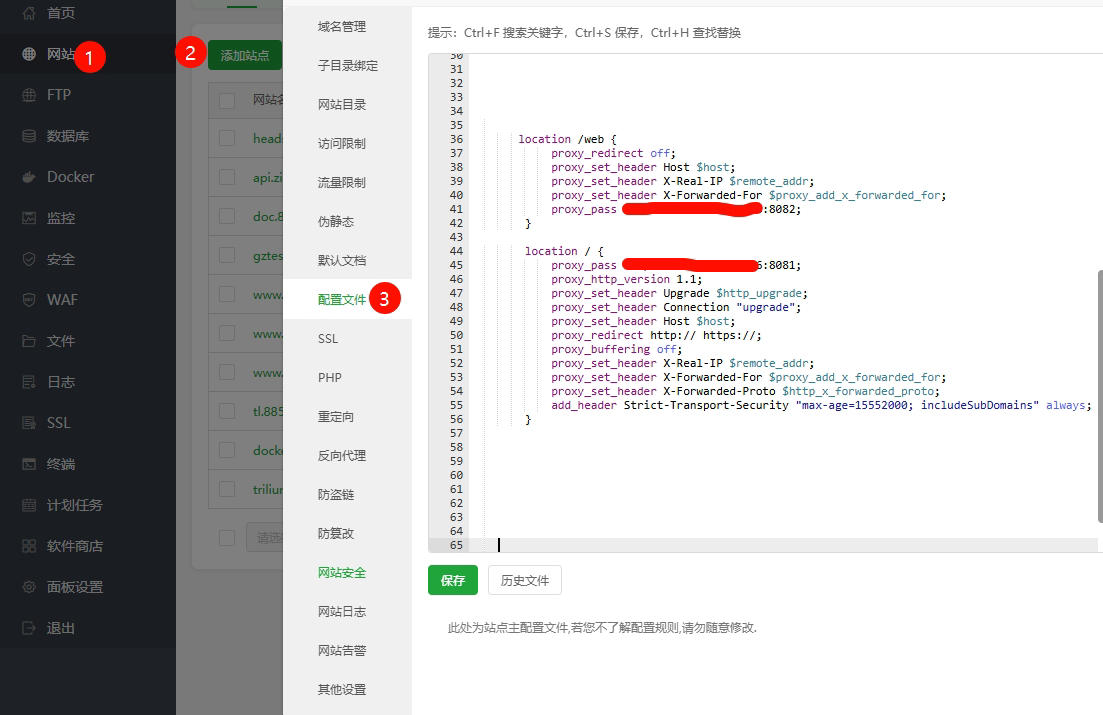
6.开始配置headscale的管理端的界面
访问地址:http://刚才绑定的域名/web
会看到下面的界面,需要配置好地能开始使用

7.管理用户
刚才创建的用户在这个页面可以管理

8.管理设备
在这个页面可以管理已组网的设备,点击”New Device“即可以添加了


注意:key一定要带前缀”nodekey:“
前提需要先安装客户端,下面就讲客户安装和使用方法
9.windows安装Tailscale客户端
下载地址:https://tailscale.com/download
默认安装完成后进入目录
C:\Program Files\Tailscale
在空白处按住shift键右键弹出菜单后鼠标选择命令窗口,输入命令
tailscale login –login-server http://<公网IP>:8081

把这段字符串复制填入管理设备里,一定要包括“nodekey:”

或点击右下角的tailscale-log in也会弹出网页
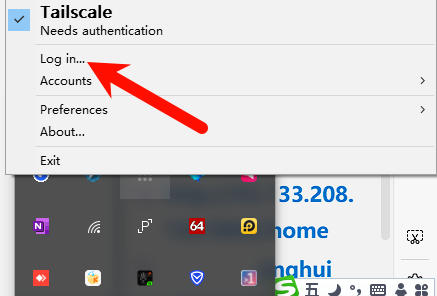

要把这个勾去掉,意思是不使用tailscale的DNS?都自部署了,好像不去掉也可以,可以自测

下载导入注册表(这个好像也可以省略)
打开地址:http://绑定的域名/windows
10.在linux docker安装tailscale客户端:
docker run -d \ --name=tailscaled \ -v /docker/tailscale/:/var/lib \ -v /dev/net/tun:/dev/net/tun \ -e TS_STATE_DIR=/var/lib/state/ \ --network=host \ --restart always \ --privileged tailscale/tailscale:v1.44.0 \ tailscaled --tun=tailscale0 -no-logs-no-support=truedocker run -d \ --name=tailscaled \ -v /docker/tailscale/:/var/lib \ -v /dev/net/tun:/dev/net/tun \ -e TS_STATE_DIR=/var/lib/state/ \ --network=host \ --restart always \ --privileged tailscale/tailscale:v1.44.0 \ tailscaled --tun=tailscale0 -no-logs-no-support=truedocker run -d \ --name=tailscaled \ -v /docker/tailscale/:/var/lib \ -v /dev/net/tun:/dev/net/tun \ -e TS_STATE_DIR=/var/lib/state/ \ --network=host \ --restart always \ --privileged tailscale/tailscale:v1.44.0 \ tailscaled --tun=tailscale0 -no-logs-no-support=trueCopy
使用如下命令进行登录:
docker exec -it tailscaled tailscale login –login-server http://<公网IP>:8081
之后就可以在服务端查看所有的客户是否在线
docker exec headscale headscale node list

回到管理界面也可以管理设备了,自动分配的IP地址就可以用来异地组网连接了,快去试试吧。

至于苹果设备使用作者本人没有,所以没办法测试,可以网上搜索相关教程
原文链接:https://blog.csdn.net/2409_89146321/article/details/144988406?ops_request_misc=%257B%2522request%255Fid%2522%253A%25221824fa1992a31392d83d8337088bddcd%2522%252C%2522scm%2522%253A%252220140713.130102334.pc%255Fblog.%2522%257D&request_id=1824fa1992a31392d83d8337088bddcd&biz_id=0&utm_medium=distribute.pc_search_result.none-task-blog-2~blog~first_rank_ecpm_v1~times_rank-3-144988406-null-null.nonecase&utm_term=%E9%A3%9E%E7%89%9BOS


